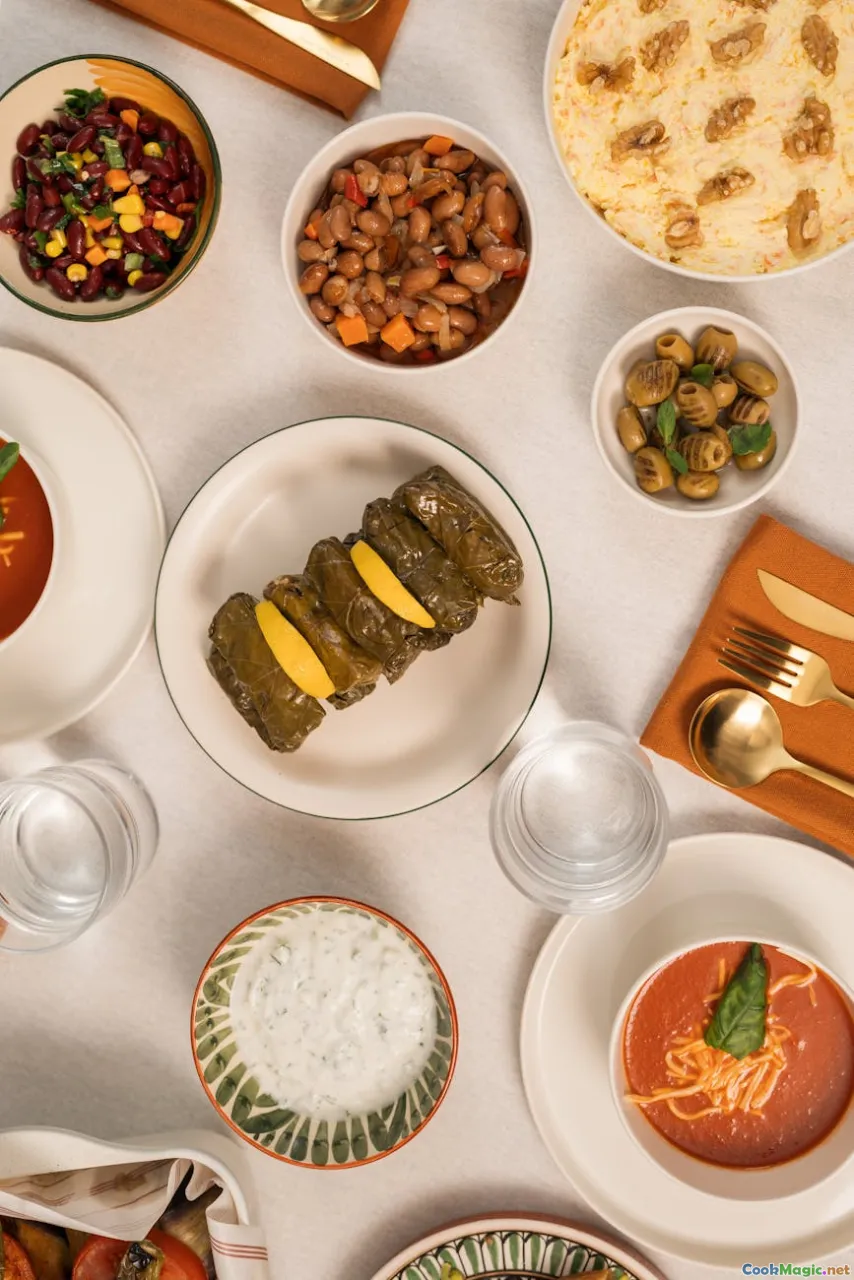Exploring Greek Meze Small Plates With Big Flavors
7 min read Discover the vibrant world of Greek meze: small plates bursting with bold flavors, rich history, and cultural significance that transform any meal into a celebration. April 30, 2025 04:55
Exploring Greek Meze Small Plates With Big Flavors
Imagine walking into a bustling Greek taverna at sunset, the air thick with the aroma of herbs, citrus, and grilled delicacies. The clinking of glasses, lively conversations, and the colorful array of small dishes laid out before you create an atmosphere that feels both ancient and alive. This is the heart of Greek meze—a culinary tradition that turns eating into a communal celebration.
The Cultural and Historical Significance of Meze
Greek meze, derived from the Turkish "meze" and the Arabic "mazza," are small, flavorful dishes served to accompany drinks, stimulate conversation, and foster social bonds. Historically, these plates have served as a way to showcase regional ingredients, culinary ingenuity, and hospitality.
In Greece, meze are not just appetizers; they are an integral part of social rituals, whether at a seaside tavern in Santorini or a mountain village in Crete. Sharing meze embodies the Greek spirit of filoxenia—hospitality and friendship—making every meal an occasion for connection.
The Art of Crafting Greek Meze
Creating authentic Greek meze involves more than just assembling ingredients; it’s an art that emphasizes balance, freshness, and contrasting textures. The selection of ingredients—olive oil, lemon, herbs like oregano and dill, fresh vegetables, and seafood—speaks to Greece’s rich agricultural heritage.
Preparation techniques often include grilling, marinating, and slow-cooking, which enhance the depth of flavor. For example, marinating octopus overnight ensures tenderness and a burst of briny goodness, while grilling feta creates a smoky, melt-in-your-mouth experience.
Iconic Greek Meze Dishes
1. Tzatziki: The Cooling Yogurt Dip
A staple at any Greek table, tzatziki is a creamy blend of thick Greek yogurt, grated cucumber, garlic, dill, and a splash of olive oil and lemon juice. Its cooling effect balances spicy or smoky dishes and is perfect for scooping with warm pita bread or raw vegetables.
2. Saganaki: Flambéed Cheese
A crispy, golden-fried slice of cheese, typically graviera or kefalotyri, flambéed with a splash of brandy or ouzo. The rich, savory flavor and crispy edges make it an irresistible start.
3. Dolmades: Stuffed Grape Leaves
Grape leaves wrapped around a fragrant mixture of rice, herbs, pine nuts, and sometimes minced meat. These bites are often served cold, with a squeeze of lemon, offering a burst of herbal freshness and a tender, slightly chewy texture.
4. Keftedes: Greek Meatballs
Juicy meatballs seasoned with herbs like mint and oregano, fried until crispy, and served with a tangy tomato sauce or lemon wedge. Their savory aroma and tender interior make them a crowd favorite.
5. Grilled Octopus: A Mediterranean Classic
Tenderized through slow cooking or marinating, then grilled over open flames to achieve a smoky char. Often served with lemon, oregano, and a drizzle of olive oil, it’s a dish that exemplifies Greek seaside culinary traditions.
6. Horiatiki Salad: Village Salad
A rustic salad of ripe tomatoes, cucumbers, red onions, Kalamata olives, and large chunks of feta, dressed simply with olive oil, oregano, and a splash of vinegar. It’s the quintessential Greek refreshment.
The Experience of Sharing Meze
Part of what makes Greek meze so special is the shared experience. Plates are placed at the center of the table, encouraging diners to sample a variety of flavors and textures. The act of passing dishes, pouring wine, and engaging in lively conversation transforms eating into a communal ritual.
In my own travels through Greece, I’ve found that the best meze experiences happen in local taverns—places where recipes are passed down through generations and ingredients are sourced fresh from the surrounding land and sea. Each bite tells a story of history, geography, and culture.
Personal Reflections and Tips for Enjoying Greek Meze
Having indulged in countless meze feasts, I’ve learned that the secret to truly appreciating this culinary tradition lies in the appreciation of its diversity and simplicity. Always opt for the freshest ingredients, embrace the variety, and don’t shy away from trying unfamiliar dishes.
When hosting your own Greek-inspired gathering, consider creating a meze platter with an assortment of dips, cheeses, marinated vegetables, and grilled seafood. Pair it with crisp white wine or ouzo, and let the conversation flow as freely as the food.
Final Thoughts
Greek meze small plates are more than just food; they are an expression of a culture that values community, tradition, and the celebration of life’s simple pleasures. Each dish, with its bold flavors and inviting textures, invites you into a world where food becomes a bridge connecting past and present, locals and visitors.
So next time you wish to elevate your dining experience, gather your friends, set the table with an array of meze, and embark on a flavorful journey through Greece’s vibrant culinary landscape. You’ll find that in these small plates, there’s a big story waiting to be tasted.









